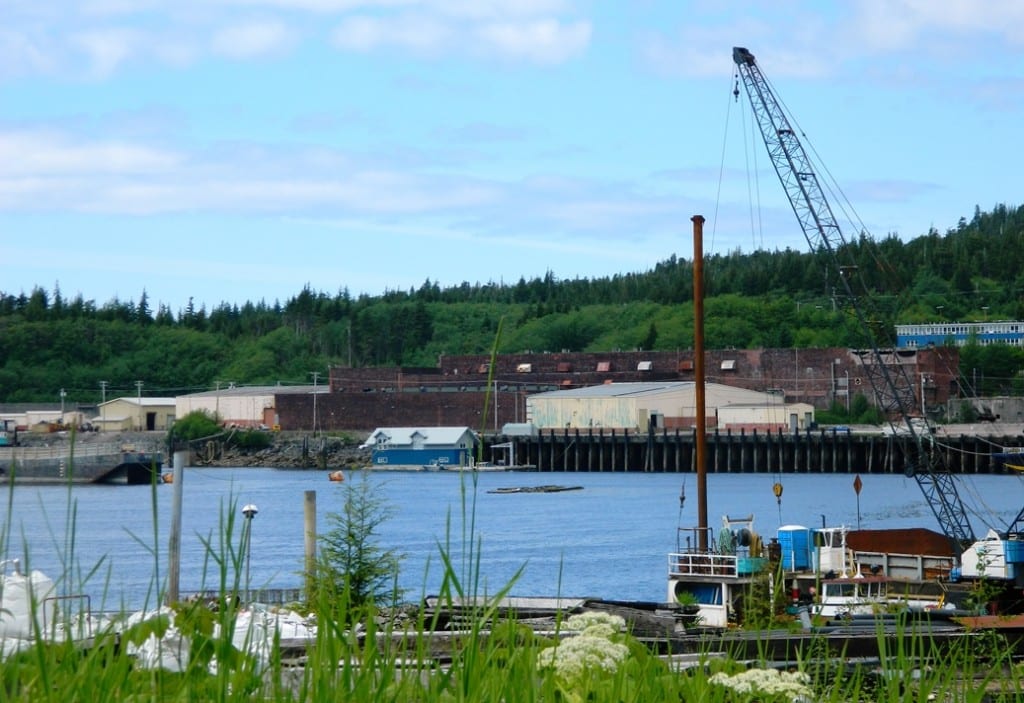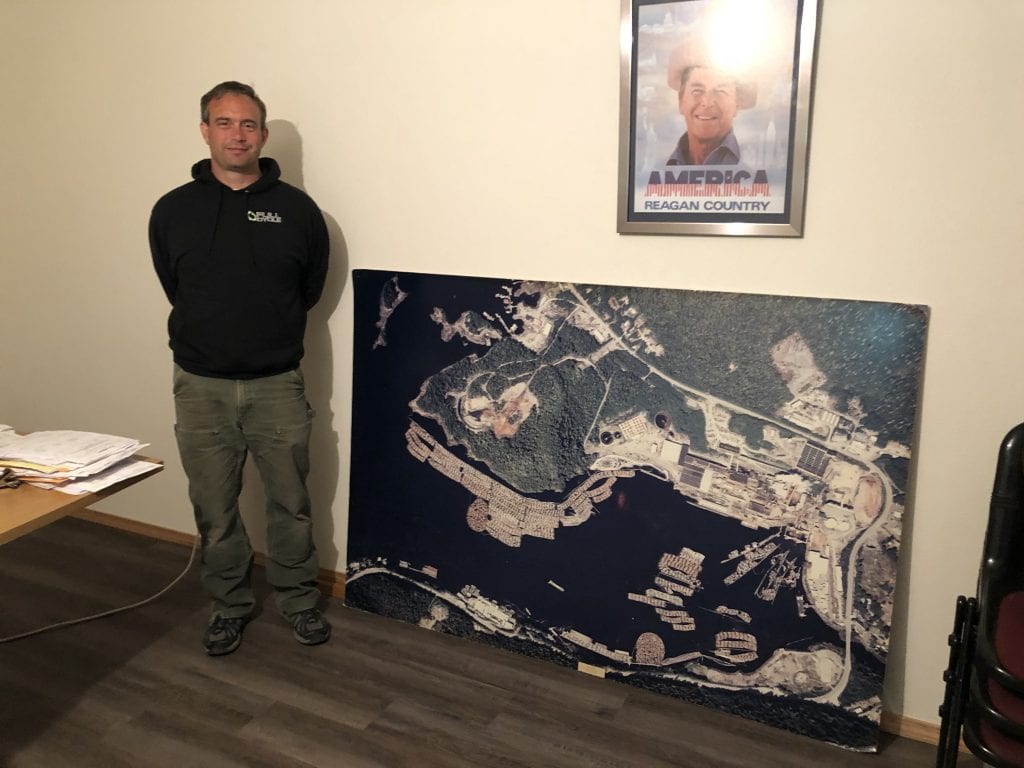
A plan to convert Ketchikan’s former pulp mill into a private cruise destination will be further studied in coming weeks by state and federal agencies. That’s as the first phase of the $50 million project at Ward Cove is being reviewed by the Army Corps of Engineers.
At a summer open house, developers’ attorney Stephen Bradford told reporters that there’s a feeling in Ketchikan that downtown’s becoming saturated by cruise ships.
“Ketchikan reached a million visitors a couple of summers ago,” Bradford told KRBD in July. “And it really prompted a discussion of when is enough enough.”
Developers propose a solution that problem: more berth space for more ships, seven miles north of the historic town.
A partnership between the Spokely’s Ward Cove Group and the Binkley famiy’s Godspeed, Inc. is working with Norwegian Cruise Lines to convert the city’s former pulp mill into an entertainment complex that could eventually be a destination unto itself.
The property’s been owned by father-and-son David and Andrew Spokely since 2011. Both families are politically active: the elder Spokely founded the Alaska Free Market Coalition, a PAC that reported spending more than $20,000 to help elect Republican Mike Dunleavy.

The Binkley family partners are based in Fairbanks. Their father John Binkley is a former Republican legislator and president of Cruise Lines International Association Alaska, the industry’s main trade group in the state.
The major regulatory hurdle to break ground lies with the Army Corps of Engineers. It has to vet plans to build a 500-foot floating dock that could accommodate both of Norwegian Cruise Lines megaship sisters: the Joy and Bliss as soon as next year.
“We were just very concerned because those ships are over a thousand feet long,” said Benjamin Storey, the region’s environmental manager for the Alaska Department of Transportation. He wrote a letter raising questions about the project.
It was among more than 30 letters obtained by CoastAlaska following a freedom of information request with the Army Corps. Most were from residents critical or skeptical of the project’s feasibility. One letter was from an adjacent business expressing outright support.
“We were really surprised that they had projected how fast they would build it up,” Storey said in an interview.
That’s because Ward Cove is already home to the Alaska Marine Highway System’s layup dock and headquarters. Initial plans called for breaking ground before the end of the year.
“When we realized like all the agencies and the amount of consultation we have to go through, we were like, how is that even possible?” he added.
The U.S. Coast Guard is working with state officials to develop a risk assessment to look at navigation concerns on the cove. It hasn’t been completed, Coast Guard Lt. Jesse Collins said Thursday.
There’s also scrutiny from the Department of Environmental Conservation over building over the contaminated former mill site. The pulp mill operated from the 1950s up until 1997 and was a major employer in town. But following its closure, the EPA put a number of restrictions on the site to keep pollution from leaching into the wider environment.
EPA wouldn’t comment except to say it had requested the Army Corps give it another month to weigh in. The comment period has been extended until September 19.
Sally Schlichting with the DEC’s contaminated sites program wouldn’t say in any detail what her agency’s concerns are, but she says there’s a lot of history in Ward Cove that’ll be taken into consideration when they file comments with the Army Corps.
“We have quite an extensive environmental record for this site, six file boxes, at least,” she said.
She says DEC will be looking at the proposed floating dock that’s phase one.
“But we’re also looking at the long term use of the facility,” she said. “It’s not just the construction of the dock itself but also as a cruise ship dock with cruise ship traffic and activity.”
State biologists are also studying potential effects to fish species.
“It’s somewhat narrow, especially with the large cruise ship in there,” Alaska Department of Fish and Game’s Mark Minnillo said of the water body. “And with bow thrusters and propellers and the noise created by those ships, there’s potential for disturbance to the migrating adult salmon species.”
The Craig-based habitat biologist is finalizing comments on behalf of his agency. He notes the cove is connected to Ward Lake, a popular place for Ketchikan anglers fishing for salmon and steelhead.
Decades of logs and other debris dumped in Ward Cove led to an EPA-approved closure plan that puts restrictions on the property.
A sand layer was placed over about 27 acres of seafloor nearly two decades ago. It’s at most a foot deep and is designed to help bottom-dwelling organisms recover.
The floating dock is being designed by Turnagain Marine Construction. The company’s president Jason Davis says the design takes that into account.
“You know, I think this is a very responsible and very appropriate development for Ward Cove,” he said by phone in Anchorage.
And there’s plenty of room for everybody, he said.
“This facility is designed so that there’s enough maneuvering room for all the Ward Cove dock users,” Davis said, “and we’re designing that to the standard of the industry for vessel navigation.”
It’s unclear whether the project will receive its permits in time for next year’s cruise season. But that remains the developers’ goal.





